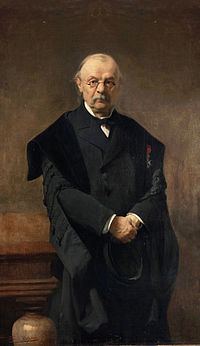Nationality French Role Mathematician Alma mater Ecole Polytechnique Education University of Paris | Known for Catalan\'s conjecture Fields Mathematics Name Eugene Catalan | |
 | ||
Born 30 May 1814Bruges ( 1814-05-30 ) Doctoral students Francois DeruytsCharles HermiteConstantin Le Paige Notable students Charles Hermite, Constantin Le Paige | ||
May 30 benny goodman tom morello eug ne charles catalan
Eugène Charles Catalan (30 May 1814 – 14 February 1894) was a French and Belgian mathematician.
Contents
- May 30 benny goodman tom morello eug ne charles catalan
- Mayo 30 benny goodman tom morello eug ne charles catalan
- Biography
- Work
- Selected publications
- References
Mayo 30 benny goodman tom morello eug ne charles catalan
Biography

Catalan was born in Bruges (now in Belgium, then under Dutch rule even though the Kingdom of the Netherlands had not yet been formally instituted), the only child of a French jeweller by the name of Joseph Catalan, in 1814. In 1825, he traveled to Paris and learned mathematics at École Polytechnique, where he met Joseph Liouville (1833). In December 1834 he was expelled along with most of the students in his year for political reasons; he resumed his studies in January 1835, graduated that summer, and went on to teach at Châlons-sur-Marne. Catalan came back to the École Polytechnique, and, with the help of Liouville, obtained his degree in mathematics in 1841. He went on to Charlemagne College to teach descriptive geometry. Though he was politically active and strongly left-wing, leading him to participate in the 1848 Revolution, he had an animated career and also sat in the France's Chamber of Deputies. Later, in 1849, Catalan was visited at his home by the French Police, searching for illicit teaching material; however, none was found.
The University of Liège appointed him chair of analysis in 1865. In 1879, still in Belgium, he became journal editor where he published as a foot note Paul-Jean Busschop's theory after refusing it in 1873 - letting Busschop know that it was too empirical. In 1883, he worked for the Belgian Academy of Science in the field of number theory. He died in Liège, Belgium where he had received a chair.
Work
He worked on continued fractions, descriptive geometry, number theory and combinatorics. He gave his name to a unique surface (periodic minimal surface in the space
